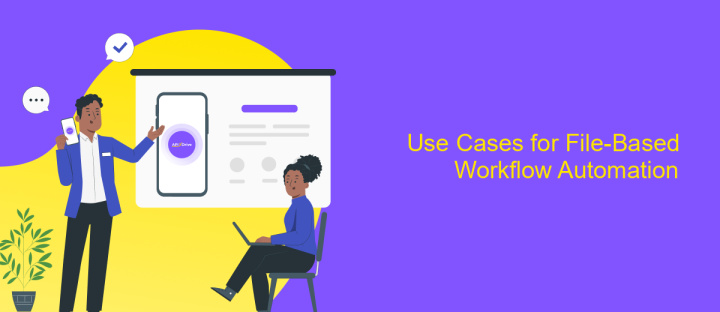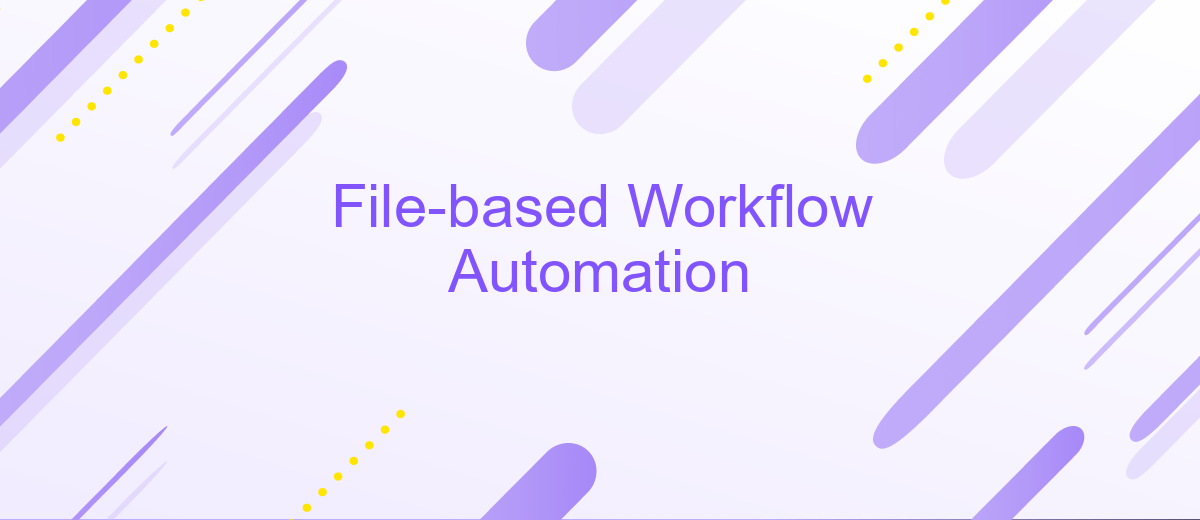File-based Workflow Automation
In the digital age, file-based workflow automation has become a cornerstone for enhancing efficiency and productivity across various industries. By automating routine tasks and streamlining data management processes, organizations can significantly reduce manual errors and save valuable time. This article explores the key benefits, tools, and best practices for implementing file-based workflow automation in your business operations.
Introduction
File-based workflow automation is a powerful approach to streamline and optimize business processes by automating repetitive tasks. This method involves the use of software tools to manage, process, and transfer files without manual intervention. It is particularly beneficial for organizations dealing with large volumes of data and complex workflows.
- Reduces human error by automating repetitive tasks
- Increases efficiency and productivity
- Facilitates seamless data integration across different platforms
- Ensures timely and accurate data processing
One of the key aspects of file-based workflow automation is the integration of various services and applications. Tools like ApiX-Drive can significantly simplify this process by providing a user-friendly interface for setting up integrations. ApiX-Drive allows businesses to connect their existing systems, enabling smooth data flow and enhancing overall operational efficiency. By leveraging such tools, organizations can achieve higher levels of automation and focus on more strategic tasks.
Benefits of File-Based Workflow Automation

File-based workflow automation offers numerous benefits that can significantly enhance operational efficiency. By automating repetitive tasks such as data entry, file transfers, and report generation, organizations can save valuable time and reduce the risk of human error. This leads to a more streamlined workflow, allowing employees to focus on higher-value tasks that require critical thinking and creativity. Additionally, automation ensures consistency and accuracy, which is crucial for maintaining data integrity and compliance with industry standards.
Another key advantage of file-based workflow automation is its ability to integrate with various software and services, facilitating seamless data exchange across different platforms. Tools like ApiX-Drive can be particularly useful in this context, as they enable easy integration and automation between disparate systems without the need for extensive coding knowledge. This not only simplifies the setup process but also makes it scalable, allowing businesses to adapt quickly to changing needs and technologies. Ultimately, file-based workflow automation can lead to significant cost savings, improved productivity, and enhanced overall performance.
How File-Based Workflow Automation Works

File-based workflow automation streamlines processes by automating tasks that involve managing and processing files. This method is particularly useful for businesses dealing with large volumes of data and repetitive tasks. By setting up automated workflows, organizations can save time, reduce errors, and enhance productivity.
- Identify the tasks that can be automated within your workflow.
- Choose a file-based workflow automation tool that suits your needs.
- Set up triggers that initiate the workflow, such as file creation or modification.
- Define the actions that should be taken when the triggers are activated.
- Test the workflow to ensure it operates as expected.
- Monitor and adjust the workflow to optimize performance.
Integrating different services and applications can further enhance file-based workflow automation. Tools like ApiX-Drive allow seamless integration between various platforms, enabling automated data transfer and synchronization. By leveraging such integrations, businesses can create comprehensive and efficient workflows tailored to their unique requirements.
Use Cases for File-Based Workflow Automation

File-based workflow automation is a powerful tool for streamlining various business processes. By automating file-related tasks, organizations can save time, reduce errors, and improve efficiency. This technology is particularly useful in industries where large volumes of data are processed and managed daily.
One common use case is the automation of data backups. By setting up automated workflows, companies can ensure that critical data is regularly backed up without manual intervention. This reduces the risk of data loss and ensures business continuity.
- Automated data backups
- File synchronization across different systems
- Automated report generation and distribution
- Data migration between platforms
- Integration of file-based workflows with other business systems
Services like ApiX-Drive can facilitate the integration of file-based workflows with other business applications, making it easier to automate complex processes. By using such tools, businesses can achieve seamless integration and improved operational efficiency, ultimately driving better outcomes.
- Automate the work of an online store or landing
- Empower through integration
- Don't spend money on programmers and integrators
- Save time by automating routine tasks
Best Practices for File-Based Workflow Automation
Implementing file-based workflow automation requires careful planning and adherence to best practices to ensure efficiency and reliability. Start by establishing a clear file naming convention and directory structure to maintain organization and easy retrieval. Utilize robust error handling and logging mechanisms to track and resolve issues promptly. Regularly back up files and maintain version control to prevent data loss and ensure consistency.
Integrating with other systems can enhance the capabilities of your workflow automation. Utilize services like ApiX-Drive to streamline integrations with various applications, reducing manual intervention and potential errors. Ensure that your automation scripts are well-documented and maintainable. Regularly review and update your workflows to adapt to changing requirements and technologies. Security is paramount; implement proper access controls and encryption to protect sensitive data.
FAQ
What is file-based workflow automation?
How can file-based workflow automation benefit my business?
What types of tasks can be automated in a file-based workflow?
Do I need programming skills to set up file-based workflow automation?
How do I integrate file-based workflow automation with other systems or applications?
Apix-Drive will help optimize business processes, save you from a lot of routine tasks and unnecessary costs for automation, attracting additional specialists. Try setting up a free test connection with ApiX-Drive and see for yourself. Now you have to think about where to invest the freed time and money!


